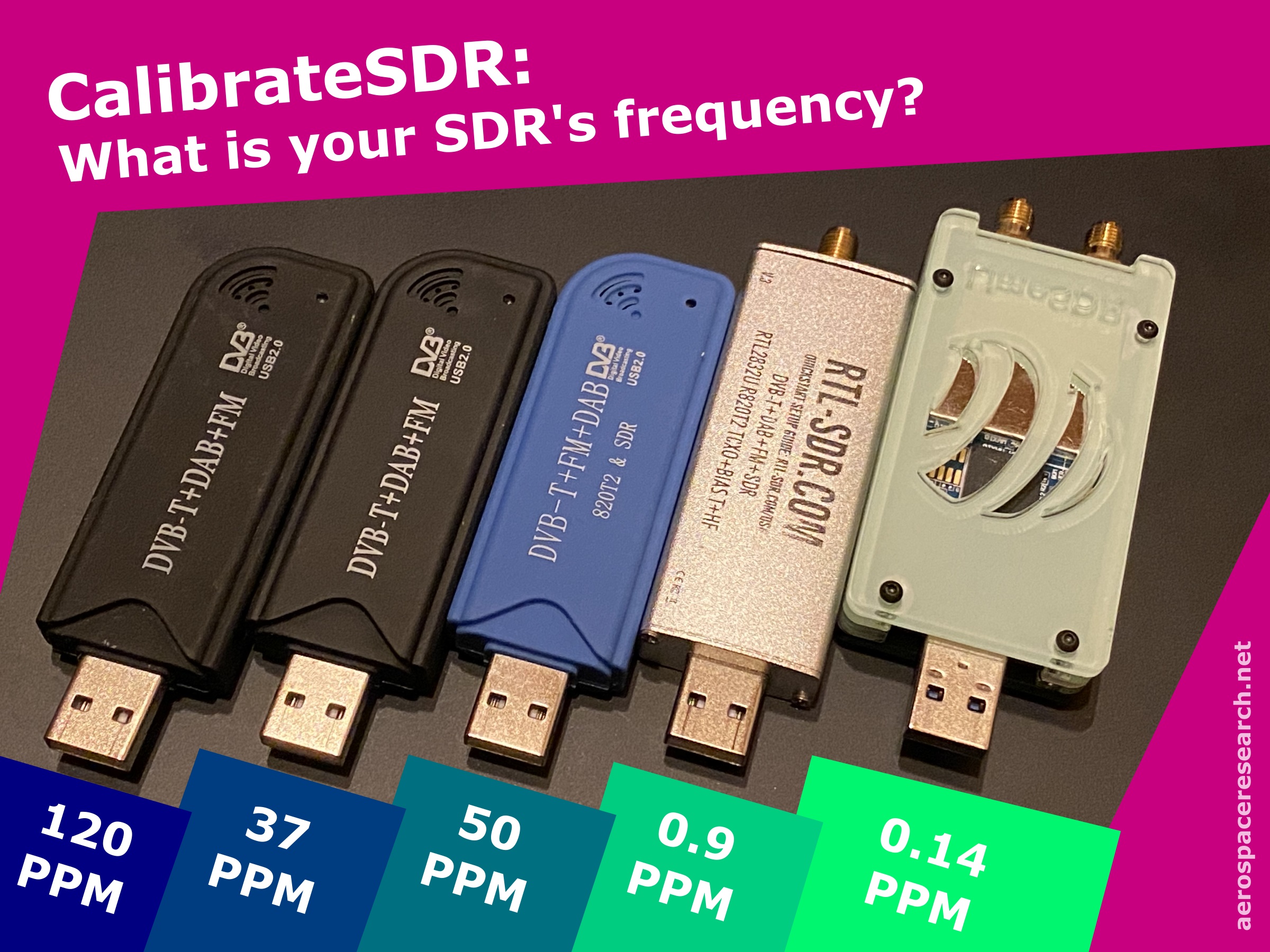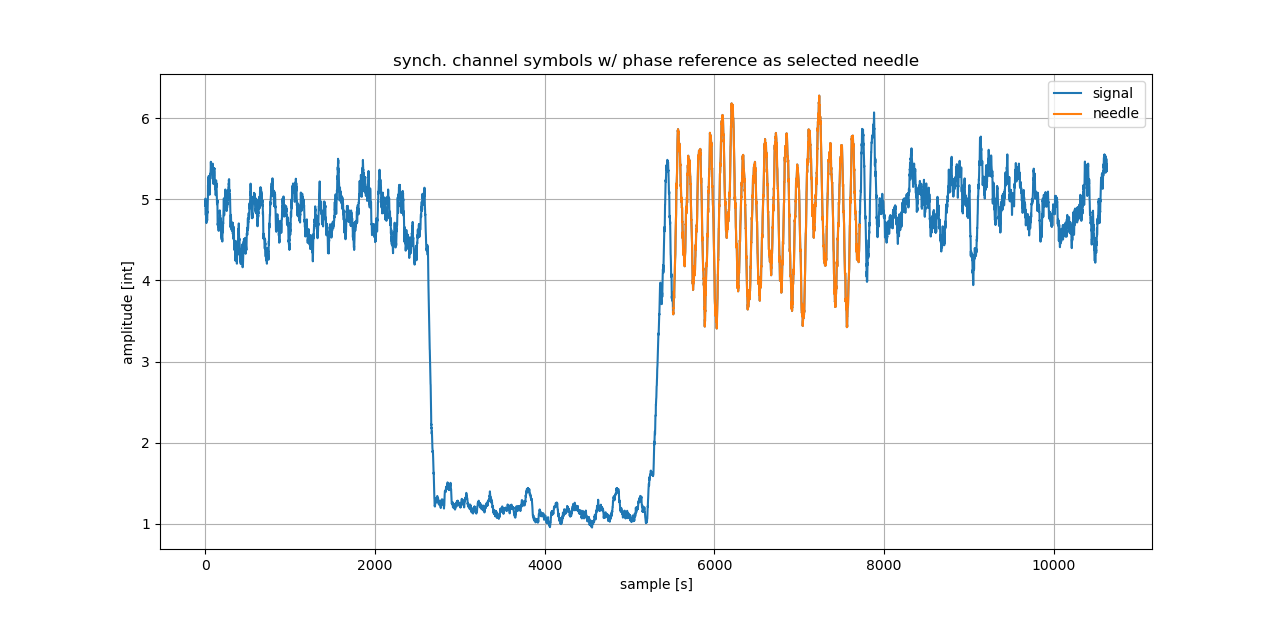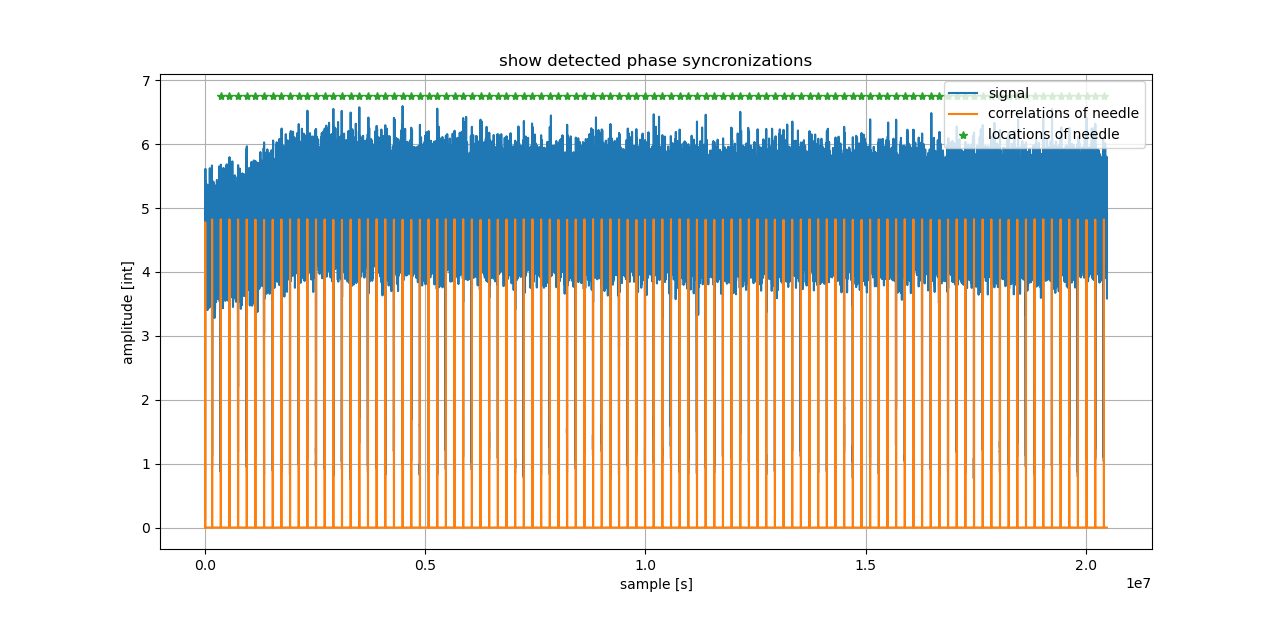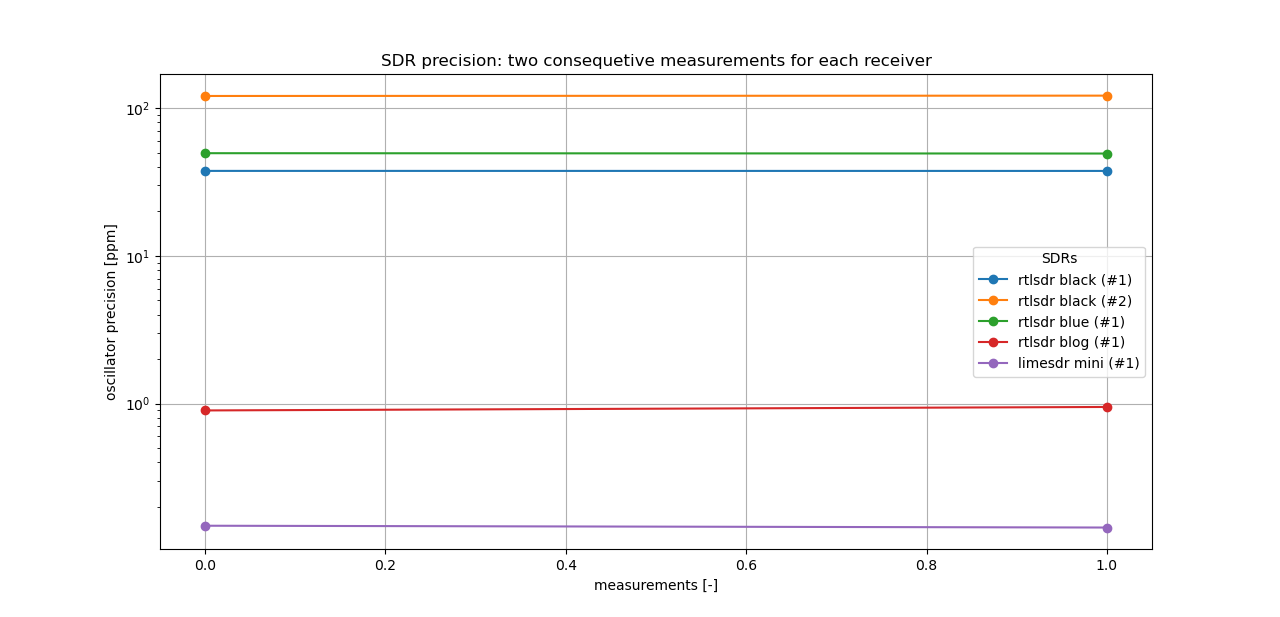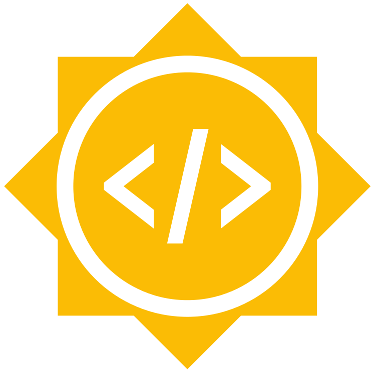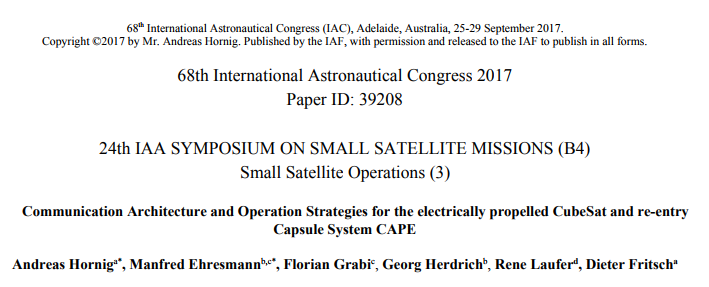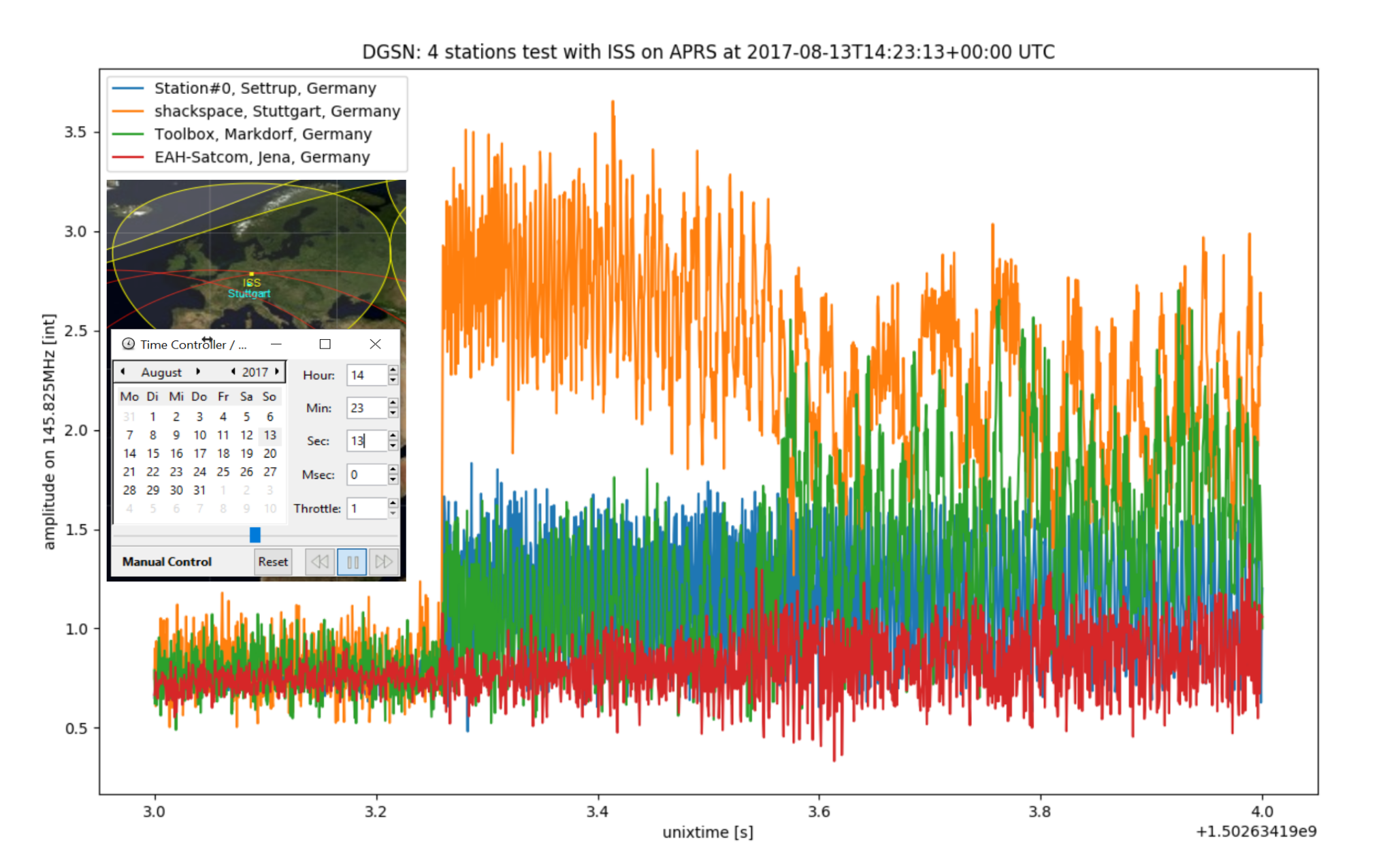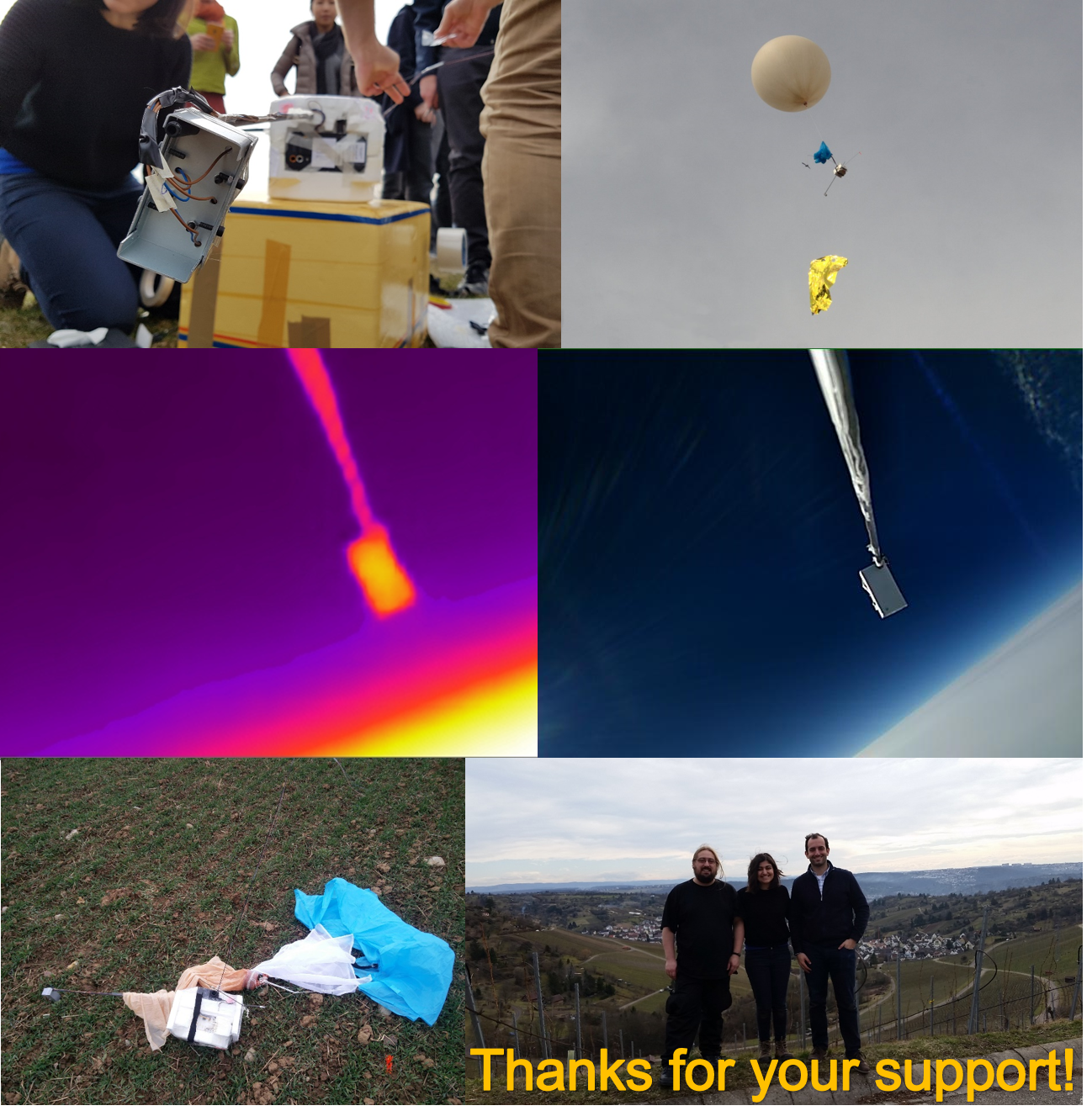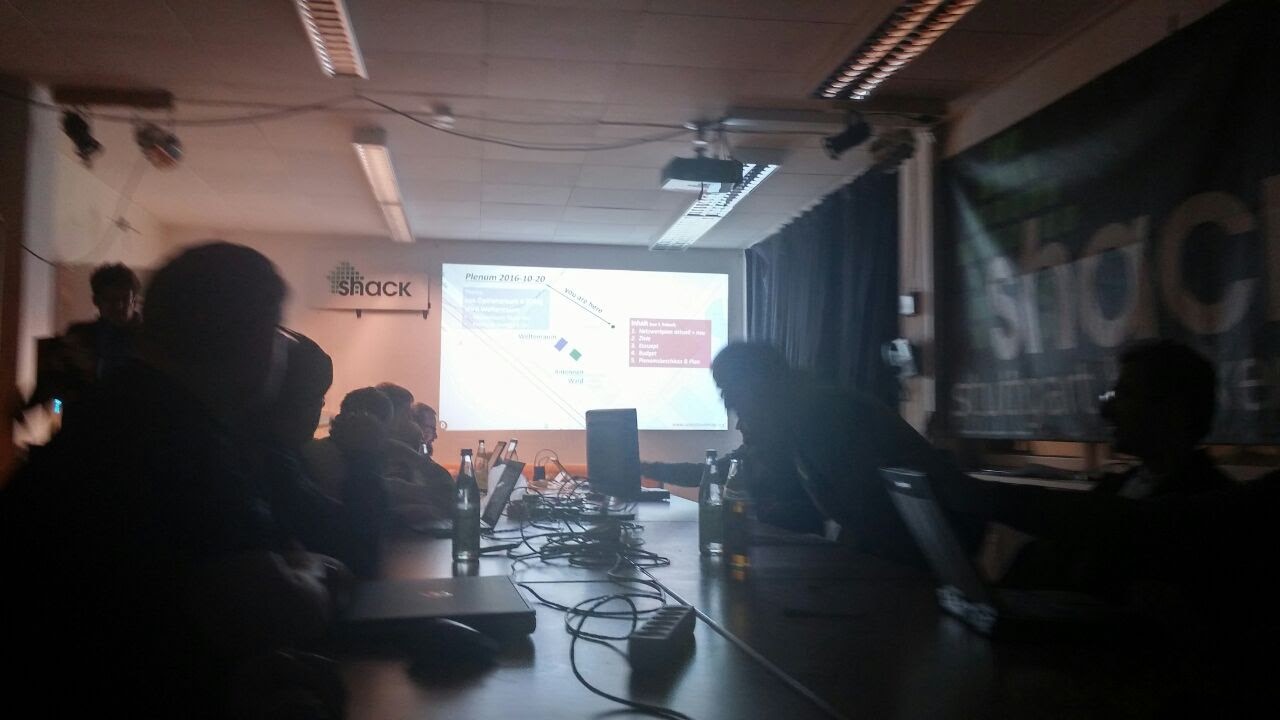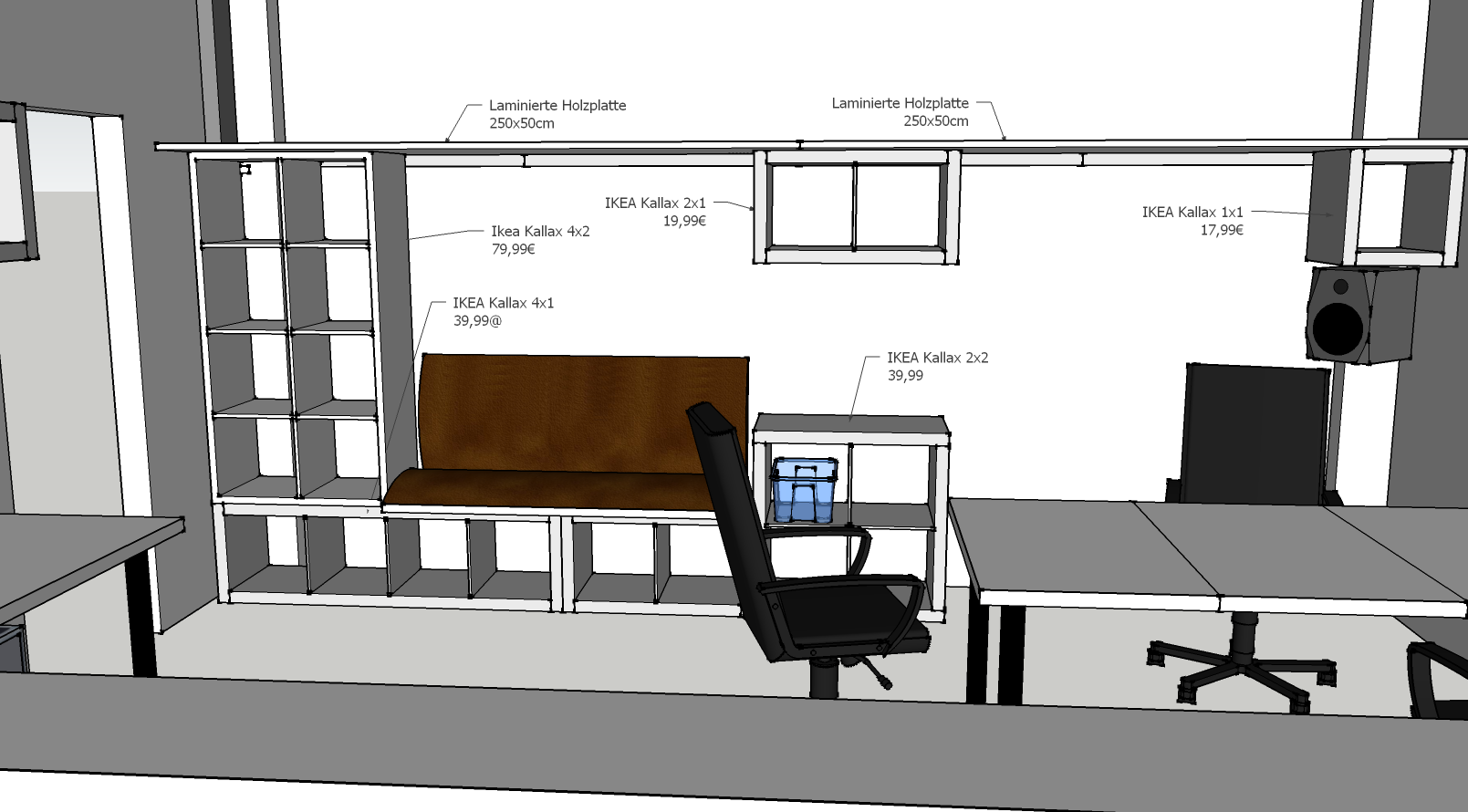-
Call for Google Summer of Code 2021! Be our Summer Student and code your open-source space projects
04/10/2021 at 23:43 • 1 commentAgain for the 7th time, AerospaceResearch.net[0] is proud to be selected as an official mentoring organization for the Summer of Code 2021 (GSOC) program run by Google[1]. And we are now looking for students to spend their summers coding on great open-source space software, getting paid by Google, releasing scientific papers about their projects and supporting the open-source space community.
Until 13th ot April 2021, students can apply for an hands on experience with applied space programs. As an umbrella organisation, AerospaceResearch.net and ep2lab of Carlos III University of Madrid are offering you various coding ideas[2] to work on:
- The Distributed Ground Station Network – global tracking and communication with small-satellites[2][4]
- ep2lab of Carlos III University of Madrid[2]
- or your very own proposal![2]
If you are a student, take your giant leap into the space community, realizing your very own space software, and the chance to be recognized by Google headhunters. If you are professor, feel free to propose this great opportunity to your students or even have your projects being coded and realized!
During the last years, we mentored more than 21 students during Summer of Code campaigns[6] and now, we achieved several great things together. We have released several papers. We spent computing power worth 60,000 PCs to those students projects, even helping their bachelor theses, and indirectly supporting the IMEX program[5] by the European Space Agency(ESA). And as a surprise and an honor for us, we had been on plenary stage with Canadian astronaut Chris Hadfield to promote those projects during the International Astronautical Congress 2014 in Toronto.
We want to repeat that success, and now it’s your turn to be active in open-source space!
Apply today, find all projects on the GSOC webpage![1] We are waiting for you,
Andreas Hornig, Head of Platform
[0] https://aerospaceresearch.net/?page_id=2156 [1] https://summerofcode.withgoogle.com [2] https://aerospaceresearch.net/?page_id=2156#codingideas [3] http://ksat-stuttgart.de [4] https://www.youtube.com/watch?v=TC4Ls3AGHf4 [5] https://www.youtube.com/watch?v=FY0vjbBp4eg [6] https://www.youtube.com/watch?v=gkklxZxjT-8&list=PL-lXf3kTWgqybFL-VOmVxKyjnrVPE7DBB
Feel free to forward this email to whomever you think it may concern!
### More Information ###
# About Google Summer of Code (GSOC)[1]: Google Summer of Code is a global program focused on introducing students to open source software development. Students work on a 3 month programming project with an open source organization during their break from university.
Since its inception in 2005, the program has brought together 12,000+ student participants and 11,000 mentors from over 127 countries worldwide. Google Summer of Code has produced 30,000,000+ lines of code for 568 open source organizations.
As a part of Google Summer of Code, student participants are paired with a mentor from the participating organizations, gaining exposure to real-world software development and techniques. Students have the opportunity to spend the break between their school semesters earning a stipend while working in areas related to their interests.
In turn, the participating organizations are able to identify and bring in new developers who implement new features and hopefully continue to contribute to open source even after the program is over. Most importantly, more code is created and released for the use and benefit of all.
# About AerospaceResearch.net[0]: We are a DGLR young academics group at the University of Stuttgart for aerospace related simulations applying distributed computing. Our global citizen scientists community of 15,000 users are donating their idle computing time of 60,000 computers and forming a virtual super computer connected via the Internet. And this massive network is used for solving difficult space numerics or for sensor applications. We are bringing space down to Earth and supporting the space community from students to organizations.
# Distributed Ground Station Network [DGSN]: The Distributed Ground Station Network is a system for tracking and communication with small satellites and other aerial vehicles. The concept includes a global network of small and cheap ground stations that track beacon signals sent by the satellite, plane or balloon. The ground stations are located at ordinary people at home, so called citizen scientists, and are connected via the Internet. A broadcasted beacon signal is received by at least 5 stations and can be used then for trilateration to obtain the position of the signal’s origin. For this each ground station correlates the received signal with the precise reception time, which is globally provided and synchronized by GPS. This shall help small satellite provider and even Google’s Loon project to be able to track their vehicles fast, globally and simple!
-
How to calibrate your SDR aka what’s my frequency?
01/04/2021 at 12:42 • 0 commentsHow to calibrate your SDR aka what’s my frequency?
Note: Merry Christmas 2020, everyone! This is a mini how-to that will evolve during the holiday season. Have fun, come back, leave me a comment or tweet.
![]()
The calibrated SDRs… tl;dr:
If you have an RTLSDR dongle with a frequency drift (they all have! and that is not usefull), then...
- have DAB+ digital radio services on air in your area (EU, Australia, a few more places)
- get this tool https://github.com/aerospaceresearch/CalibrateSDR
- determine your frequency offset in PPM with it.
- put this ppm number in your SDR software to correct the frequency offset
- have the frequencies where they should belong!
What is my SDR’s frequency?
For a current experiment I am doing with the NOAA satellites, I need precise knowledge of the received center frequency of their APT transmission mode (that one mode, that gives you weather maps for free, yeah!) at my SDR receiver. All of my SDRs oscillators drift and so does do their converters and thus the tuned frequency. Some more (RTL-SDR Black and Blue) and some less (RTLSDR Blog, LIMESDR MINI). This is usually stated as PPM (parts per million) as how precise the oscillator will clock the ADC that is sampling the antenna input. To just give you examples of how much this can matter with 10 PPM:
NOAA satellite (~137,5 MHz): 10 / 1000000 * 137500000 Hz = 1.375 KHz
Your WIFI (~2 GHz): 10 / 1000000 * 2000000000 Hz = 20.000 KHzSo it can be way off-tuned for some purposes and calibration of your SDR receiver can be required.
What to use to calibrate?
There are quite a few ways to calibrate your SDR. Most of them resolve around measuring a signal on a frequency that you precisely know. So you compare the signal on the received frequency with the actually transmitted frequency and with his offset you can correct your SDR. That’s it.
For my NOAA experiment, I initially used Kalibrate-RTL by Steve Markgraf. That uses cellphone tower frequencies (GSM) to calibrate. That programme really works well. You can get it here (Linux: https://github.com/steve-m/kalibrate-rtl, Windows: http://rtlsdr.org/files/kalibrate-win-release.zip from web.Archive.org). The only two things I missed were these. I wanted to have this as a native Python code to use it with my other Python stuff. Okay, minor thing. And then unluckily, one of my ground stations is so remote in the beautiful Lower-Saxony region that there is hardly andy GSM coverage that Kalibrate-RTL simply did not work. So that is big hurdle.
So I needed to get another source for my calibration that all of our ground stations could use and I understand well enough.
The power of DAB+Step!
If you live in Europe (like me) or a few other places, you could find DAB+ that you could use (check the map on wikipedia). DAB+ is Digital Audio Broadcasting and will hopefully some day really really really replace classical UHF radio (before everything will be migrating to the internet…). DAB towers are quite powerful and transmit several 10 kilometers. The net of dab towers is dense enough here in Germany. So both is a good start to consider taking it. But the main point is that even though I don’t understand the transmission details at all (after spending long 10 minutes looking into the European Standard: Radio Broadcasting Systems; Digital Audio Broadcasting (DAB) to mobile, portable and fixed receivers [ETSI EN 300 401 V2.1.1 (2017-01)]), there is ONE aspect I understand on a basic level and that I am going to use for my very own calibration tool: The synchronization channel symbols that comprise the null symbol and the phase reference symbol
![]()
Figure 1: the phase reference (orange) is the „needle“ we use later for finding it in the signal (haystack). The null symbol is the segment with the lower amplitude. The null symbol and the phase reference symbol are at each data-blocks start. They are transmitted every 96ms and the samplerate is 2048000. The null symbol is as its name says a time-interval without any data transmission. ETSI also states its power should be maximum half the power of the transmitted data (paper: „Receiver Synchronization for Digital Audio Broadcasting system based on Phase Reference Symbol„, by Arun Agarwal, Member IEEE, and S. K. Patra, Senior Member, IEEE, DOI: 10.1109/ICEAS.2011.6147188).
![]()
Structure of Transmission mode I: Synchronization Channel has at #0 the Null Symbol and at #1 the Phase Reference Symbol. That is the only section that is of importance for us now. So it is easy to find and it is used for fast but rough locating the data block start. For fine locating the data block start, the phase reference symbol must be used. Sources in the internet states that DAB-radios are knowing the reference patterns and are searching/correlating for it with the pattern. My code is just lazy and detects the end of one null symbol’s position and then takes the following samples (as amplitudes) as the needle. With this needle the following phase reference symbols are being found in the big haystack.
![]()
Figure 2: All the different phase refference signals that are repeated every 96ms in DAB+ Of course this is only working under a few assumptions. The phase reference symbol should not change. The SDR oscillator should provide decent precision and stability so it does not change the incoming signal and/or needle. And lastly, the received SNR must be sufficient enought to detect the null symbols in the first place.
![]()
Figure 3: all phase reference symbols are found (green stars). They are found with correlating the needle (see Figure 1) with the full signal and the results (orange) are taken for lokating the sample „position“. ![]()
Figure 3 (zoom 1): In this zoom you see only 2 phase reference symbols. In between there is the DAB+ data block that we ignore. You can clearly see the null symbols and you can „guess“ the reference symbol shape/pattern. ![]()
Figure 3 (zoom2): Even further zoomed in, you see the result of the correlation function oscillating when it is inside the phase reference symbol. In that section, the best/highest value is taken because at that location the correlation fits best into the signal. That is about all my CalibrateSDR tool is doing.
Calibrate your SDR with CalibrateSDR
For now, CalibrateSDR can only load in DAT or WAV files as 8bit-IQ files. So you either record it with rtl_sdr or you can use SDRsharp. More features will come.
I have tested it with several SDRs. RTLSDR dongles with R820T (Black) and R820T2 (Blue) chips and without temperature controlled oscillators (TCXO). The RTLSDR dongle from RTL-SDR.com (Blog) that has an TCXO. And the LimeSDR Mini (limesdr mini) from limemicro in the CrowdSupply kickstarter edition.
All were used with SDRSharp to record on DAB+ channels. For LimeSDR Mini I did not manage to get the python library to work. That will be investigated later, but for now the SDRsharp recordings are fine.
Commands:
CMD> python.exe cali.py -m dab -f YOURFILENAME -rs 2048000 -gr
If your recorded IQ file was sampled with 2000000 samples/sec, what we did with our LimeSDR Mini, then just change -rs 2000000. If you sampled with -rs 2048000 you can also omit it, because 2048000 Hz is also DAB+ default and set as default in CalibrateSDR.
With -gr you activate the graphs as shown before. The other options are planned to be included as soon as I have time or I understand them better :).
So here you go. If this was TL;DR, you can now skip the rest and try CalibrateSDR. The rest is only some results and what I still want to do. You can find my files here, download them, and then have fun test it with CalibrateSDR.
Results aka What is my frequency now?
So far, I tested 5 different SDRs and got various results. As expected the generic RTLSDRs are the most unprecise / temperature unstable ones. Best results I got with the RTLSDR V3 from rtl-sdr.com blog (blog) and with LimeSDR Mini from limemicro. The following graph is just a quick check with two consecutive measurements of 10 seconds each to check the stability. With 10 seconds you get about 104 phase references so that statistics can be done, and the repetition showed that at least during a period of about 30 seconds the temperture influence was low. Never the less a measurement to show the temperture influence will be interesting and is planed for later.
![]()
Figure 0: different SDRs measured for their specific oscillator precision (in PPM) An interesting finding was to see that LimeSDR Mini is even more stable than even limemicro is stating. Our tests were always in the 0.1 PPM range. On their crowdsupply kickstarter page (see results in table below) it is stated for 1 PPM (with 4 PPM when stable). Me and the European Space Agency (ESA) backed it beack then for space projects, and at least it is me now with this NOAA satellite experiment that has the benefit of this ultra stable oscillator on board. And also the RTLSDR V3 is as expected with 0.9 PPMs and as stated in their datasheet.
Oscillator Precision (limemicro) Oscillator Precision (Kalibrate-RTL) Oscillator Precision (CalibrateSDR) RTLSDR black generic ? ppm N/A @ GS +/- 50 ppm RTLSDR blue generic ? ppm N/A @ GS +/- 50 ppm RTLSDR V3 blog rtl-sdr.com ? ppm +/- 2 ppm +/- 1 ppm LimeSDR limemicro +/-1 ppm initial, +/-4 ppm stable N/A N/A LimeSDR MINI limemicro +/-1 ppm initial, +/-4 ppm stable N/A @ GS +/- 0.1 ppm HackRF One Great Scott Gadgets +/- 20 ppm N/A N/A BladeRF Nuand +/- 1 ppm N/A @ GS TBC add yours … … … … * gs = ground station ** BladeRF TBC, tested not yet done. What is next?
Now I can return to my NOAA satellite experiment and use CalibrateSDR for it. I will link it here as soon as it will be finished. Stay tuned.
In the meantime, it would be cool if you could tell people here more about your SDR’s calibration results. A few famous SDRs like HackRF, BladeRF, PlutoSDR and others are still missing. I don’t have access to them so their PPM results could be sent in by you via email or in our zulip-chat. Such a small database could be handy.
And lastly, feel free to alter and modify the code. I will be more then happy to see pull requests for it. If you understand GSM, DVB-T and other signals, please add those features, too. Not everyone is living in Europe and their region maybe do not use the DAB+ radio standard. It would be great so see more people using this mini tool.
Get involved…
Use the tool: https://github.com/aerospaceresearch/CalibrateSDR
Discuss: in our ZulipChat
Expand: it with GSM, DVB-T, etc… it is under the MIT licence -
Call for Google Summer of Code 2019
04/04/2019 at 17:52 • 8 commentsDear Hackaday Friend,
Do you want to code open-source space with us during Google Summer of Code 2019?
Be our Summer Student and code your open-source space projects. You get stipends of up to $6600. The Call for GSOC 2019 is now open!
Together, we as AerospaceResearch.net, Ksat-Stuttgart (University of Stuttgart) and EP2Lab (Carlos III University of Madrid) are proud to be selected as official mentoring organizations for the Summer of Code 2019 (GSOC) program run by Google.
And we are now looking for students to spend their summers coding on great open-source space software, getting paid by Google, releasing scientific papers about their projects and supporting the open-source space community by useful programmes.
Are you a student? You have time until April 9, 2019, to apply for various coding ideas to work on, or you can bring your own!Google Summer of Code (GSoC) is a global program that matches students up with open source, free software and technology-related organizations to write code and get paid to do it! The organizations provide mentors who act as guides through the entire process, from learning about the community to contributing code. The idea is to get students involved in and familiar with the open source community and help them to put their summer break to good use.
Accepted students gain exposure to real-world open-source software development and employment opportunities in areas related to their academic pursuits. This program has brought together thousands of students and mentors from over 118 countries worldwide. As of December 2018, 651 open source projects, from areas as diverse as operating systems and community services, have participated as mentoring organizations for the program. Successful students have widely reported that their participation in GSoC made them more attractive to potential employers and that the program has helped greatly when embarking on their technical careers.More information and registration here: https://summerofcode.withgoogle.com/organizations/5583558956023808/
Contact and chat with us: https://aerospaceresearch.zulipchat.com
-
You have exactly one week left (27.March) to apply for #GSOC2018 & code other open-source #space software w/ us and @KSat_Stuttgart!
03/21/2018 at 18:39 • 7 commentsIn 2014, a student like you from @Uni_Stuttgart coded this
for @esa during @google Summer of Code. You have exactly one week left (27.March) to apply for #GSOC2018 & code other open-source #space software w/ us and @KSat_Stuttgart!
More infos here ...aerospaceresearch.net/?p=646
-
Call for Google Summer of Code 2018! Student stipends of up to 6600 USD for open-source space coding (please forward)
02/25/2018 at 14:25 • 0 commentsAgain for the 4th time, AerospaceResearch.net[0] is proud to be selected as an official mentoring organization for the Summer of Code 2018 (GSOC) program run by Google[1]. And we are now looking for students to spend their summers coding on great open-source space software, getting paid up to 6600 USD by Google, releasing scientific papers about their projects and supporting the open-source space community.
![]()
Until 27. March 2018, students can apply for an hands on experience with applied space programs. As an umbrella organisation, AerospaceResearch.net and KSat-Stuttgart e.V. are offering you various coding ideas[2] to work on:
- The Distributed Ground Station Network - global tracking and communication with small-satellites[2][4]
- KSat-Stuttgart - the small satellite society at the Institute of Space Systems / University of Stuttgart[2]
- or your very own proposal![2]
If you are a student, take your giant leap into the space community, realizing your very own space software, and the chance to be recognized by Google headhunters. If you are professor, feel free to propose this great opportunity to your students or even have your projects being coded and realized!
During the last years, we mentored more than 21 students during Summer of Code campaigns[6] and now, we achieved several great things together. We have released several papers. We spent computing power worth 60,000 PCs to those students projects, even helping their bachelor theses, and indirectly supporting the IMEX program[5] by the European Space Agency(ESA). And as a surprise and an honor for us, we had been on plenary stage with Canadian astronaut Chris Hadfield to promote those projects during the International Astronautical Congress 2014 in Toronto.
We want to repeat that success, and now it's your turn to be active in open-source space!
Apply today, find all projects on the GSOC webpage![1] We are waiting for you,
Andreas Hornig, Head of Platform
[0] http://aerospaceresearch.net/?page_id=612 [1] https://summerofcode.withgoogle.com [2] http://aerospaceresearch.net/?page_id=202#codingideas [3] http://ksat-stuttgart.de [4] https://www.youtube.com/watch?v=TC4Ls3AGHf4 [5] https://www.youtube.com/watch?v=FY0vjbBp4eg [6] https://www.youtube.com/watch?v=gkklxZxjT-8&list=PL-lXf3kTWgqybFL-VOmVxKyjnrVPE7DBB
Feel free to forward this email to whomever you think it may concern!
### More Information ###
# About Google Summer of Code (GSOC)[1]: Google Summer of Code is a global program focused on introducing students to open source software development. Students work on a 3 month programming project with an open source organization during their break from university.
---------- more ----------Since its inception in 2005, the program has brought together 12,000+ student participants and 11,000 mentors from over 127 countries worldwide. Google Summer of Code has produced 30,000,000+ lines of code for 568 open source organizations.
As a part of Google Summer of Code, student participants are paired with a mentor from the participating organizations, gaining exposure to real-world software development and techniques. Students have the opportunity to spend the break between their school semesters earning a stipend while working in areas related to their interests.
In turn, the participating organizations are able to identify and bring in new developers who implement new features and hopefully continue to contribute to open source even after the program is over. Most importantly, more code is created and released for the use and benefit of all.
# About AerospaceResearch.net[0]: We are a DGLR young academics group at the University of Stuttgart for aerospace related simulations applying distributed computing. Our global citizen scientists community of 15,000 users are donating their idle computing time of 60,000 computers and forming a virtual super computer connected via the Internet. And this massive network is used for solving difficult space numerics or for sensor applications. We are bringing space down to Earth and supporting the space community from students to organizations.
# Distributed Ground Station Network [DGSN]: The Distributed Ground Station Network is a system for tracking and communication with small satellites and other aerial vehicles. The concept includes a global network of small and cheap ground stations that track beacon signals sent by the satellite, plane or balloon. The ground stations are located at ordinary people at home, so called citizen scientists, and are connected via the Internet. A broadcasted beacon signal is received by at least 5 stations and can be used then for trilateration to obtain the position of the signal's origin. For this each ground station correlates the received signal with the precise reception time, which is globally provided and synchronized by GPS. This shall help small satellite provider and even Google's Loon project to be able to track their vehicles fast, globally and simple!
-
If you are on the International Astronautical Congress 2017 in Adelaide, meet us
09/14/2017 at 20:25 • 0 commentsI always wanted to impact a #cubesat into something :). Proof of concept for @IAC2017. @AstroEngy @UniStuttgartIRS @KSat_Stuttgart @ARDNnews
After the IAC2017, we will upload the paper for you to read it also...
More to come later.
-
How to decode Bell202 modem signal? APRS signals from the ISS at 4 stations
08/15/2017 at 17:24 • 1 comment![]()
Now, 4 DGSN stations receiving APRS from orbit by the @Space_Station! Stations are now in Settrup (a lovely small village in Lower Saxony!), @shackspace in Stuttgart, @ToolboxBodensee near Lake Constance and @eah_satcom in Jena. Where should we put one next? If you have a suggestion, please tell me here >> https://twitter.com/andreashornig/status/897434397925937152
My task is now that I still want to know the content of APRS the @Space_Station sent here! Would anyone please help me decode? :) I uploaded a Python Numpy NPY file here/goo.gl/5zLkwr .. It incuded the Signal Peak you see in the graph above from those 4 stations.
What I know is that APRS uses Bell202 coding with two frequencies of 1200 Hz and of 2200 Hz. Each represent either a 1 or 0. I just started to play with an FFT Kernel of 8K samples and I already found phases of those frequencies but so far I couldn't find the starting flag of the AX.25 frae 01111110.
As far as I know, Bell202 was also used in old internet modems. So I guess that there are people on Hackaday who play around with old modems and solve those problems while sleeping. If so, please comment below.
Until then, I will keep on playing with the 4 stations and trying to decode APRS signals.... :)
-
DGSN timing-board goes earth quakes: Tunnel-God-Detector for NASA Space Apps Challenge 2017
05/07/2017 at 11:06 • 0 commentsLast weekend, I (Andreas) was part of the NASA Space Apps Challange 2017. It is the biggest global hackathon with more than 180 locations and more than 20,000 participants.
The theme was "Earth Observation" and the participants worked to combine space data from NASA with their very own solution to create something incredible helping solve global problems. I was part of the Team "Tunnel God Detector" to detect and locate tremors to support emergency respond teams and thus saving people in danger.
Why I write this is easy: I provided the time synchronization method of my Distributed Ground Station Network and we improved it for the Tunnel-God-Sensors a lot by just discussing it in crazy ways that are just possible during hackathons like these.
I had so much fun and met awesome people! I want to say thank you to all of you. And I want to invite everyone to keep on working on the project even after SpaceApps. For that, it is on hackaday now >> https://hackaday.io/project/21788-tunnel-god-detector
-
Space … the final frontier … for our spaceballoon
03/22/2017 at 16:47 • 0 commentsHave you ever dreamt of going to space?! At least as a child you did.
Unfortunately we didn’t quite make it to space ~100km quite yet – but at >22km we (our balloon that is) have been higher than at least 99.99% of you out there. Commercial airplanes fly at 8.5km to 10.7km to give you something graspable to compare it to.
Ever since we saw the first footage of a camera attached to a weather balloon we became fascinated by the idea to take our own images. The visible curvature of our small sphere (speak: earth) floating through space captured was ever so inspiring. You don’t even need to spend a lot of money doing so.
The project dubbed “spaceballoon” was accomplished by the team (andreashornig, exco, makefu) collaborating at our local hackerspace – the shack. On Saturday, 4.3.2017 we successfully launched it from the nearby Grillplatz Rotenberg on top of the Württemberg mountain.
The launch was exciting – even more so because we had more than 10 people waiting for us on the hill we chose for takeoff.
Here is a visualization attempt of the logged data: >> https://aerospaceresearch.net/?p=254
Nadka made an awesome video with the onboard footage and with some material that was taken by someone at the launch site.
This is the flight path from one of the onboard android phones:
The „hunt“ for the balloon was thrilling as we lost contact with our transmitter multiple times.
Through interpolation and some luck picking up the signal again we were able to pickup the payload – even though the commercial tracker and the android phone didn’t tell us their location – or anything for that matter.We are also really happy that the last minute efforts of team Bremen bore fruits.
![]()
As people are already telling us they also have plans (for a long time) to start a weather balloon of their own – here you can show your hands if you want to be the / a part of the next balloon project. You find a lot of needful things on our Github Repository.
A big and unorganized spaceballoon photo album can be found here.
Special thanks to Andreas (http://aerospaceresearch.net/) for taking the initiative thus causing the project to finally happen and to exco (http://excogitation.de) for sourcing the necessary parts and hacking together the whole thing into the final product.
For the lessons learned we wrote you the weather balloon guide.Reminder: writing it down makes it science – so document your projects.
Find more on our twitter account for the spaceballoon.
-
Weltenraum is go! Shackspace plenum approves new radio/medialab room
10/20/2016 at 23:14 • 0 commentsFinally, Stuttgart hackerspace shackspace will get a new room, den Weltenraum. It is a German play on words for "Worlds and Room" and also an old fashioned word for "Space". It fits perfectly because it is a room shared by different interest groups in shack that are interested in media (editing, videos, podcasting, music) as well as the ham radio operators and sdr fans. And the latter means us, the satellite space guys. Today was our weekly plenum and we finally have the go-ahead to put our ground station radio equipment there and connect the AntennaForest to the Weltenraum.
The slides you can hardly see on the above photo are on GitHub.
So we have a base of operations for all things radio now. The net weeks we will realize all the moebles you see on the image below and the network infrastructure to the AntennenWald. With this, we can connect our DGSN ground station antennas and also the FreiFunk-Stuttgart hardware. It will take some hard work setting everything up, but we put our crowdfunded money (and also a big chunk of our hackaday prize 2016 money) to very good use.
Our plan is to have a comfortable "hacking" environment until december and then we don't need to sit on the rooftop net to the antennas, we will do that from Weltenraum and with company of other creative people around us. This fruitful cohacking will be of benefit for everybody. And this project will attract more people and grow. If you are around, we will give you a tour!
![]()
The Distributed Ground Station Network
tracking CubeSats faster, anywhere and anytime for everybody!
 hornig
hornig